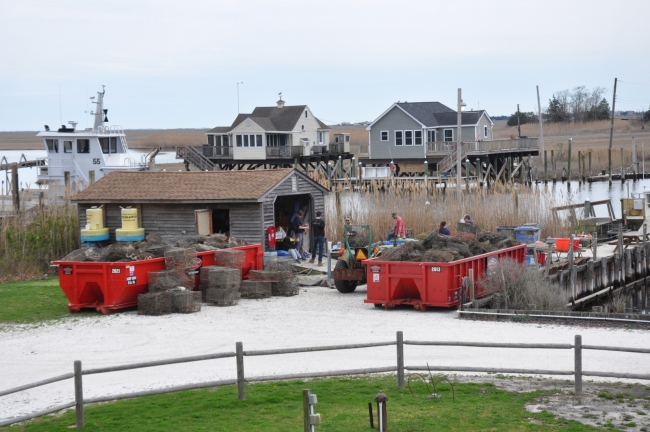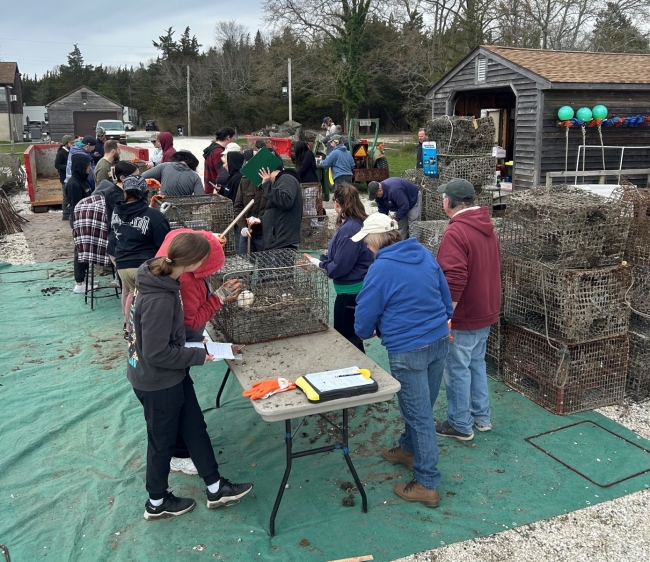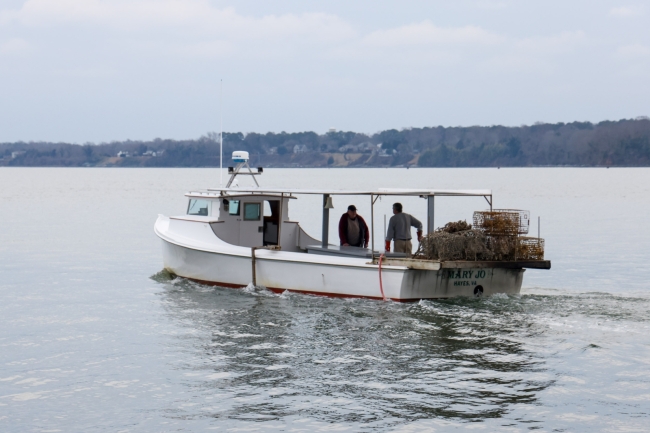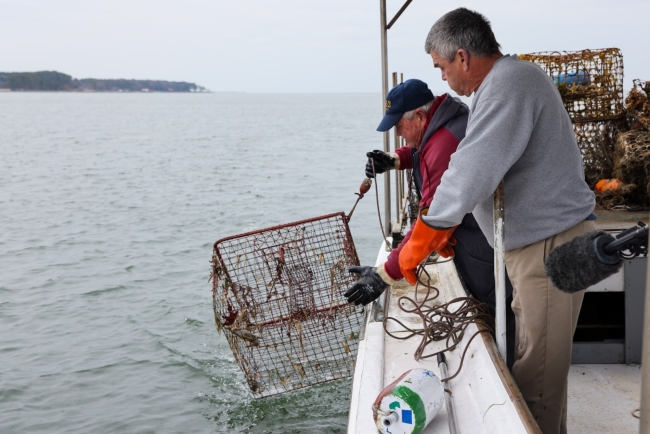The NOAA Marine Debris Program is funding marine debris removal projects with Stockton University and the William and Mary's Batten School and the Virginia Institute of Marine Science that locate and retrieve derelict crab traps, support commercial crabbers, and help protect the Mid-Atlantic blue crab fishery.
Commercial crabbers are regional coastal experts. Their livelihood depends on their understanding of the local marine environment. They know where crabs congregate and when they migrate. They stay attuned to ocean conditions such as the tides and currents, deploy fishing gear according to specific regulations, and build important relationships in the community essential for catching, processing, and selling crab. Crabbers have a vested interest in protecting the environment from marine debris.
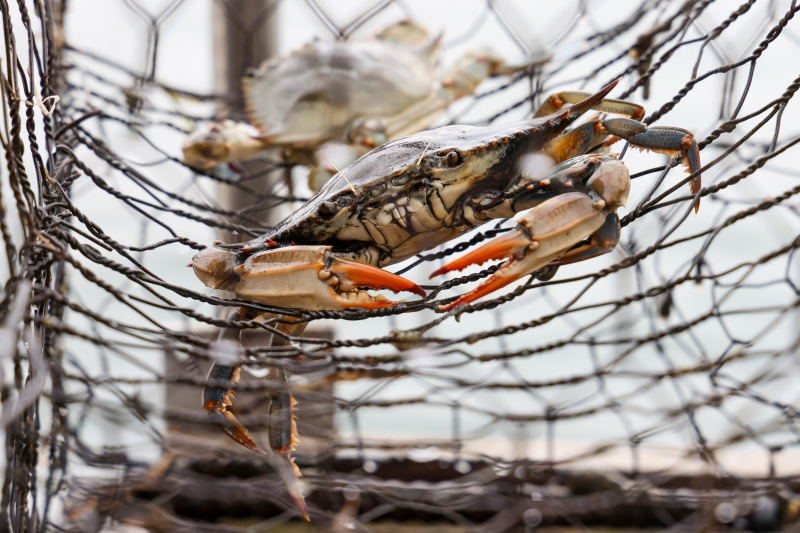
Commercial crabbers from Maryland, New Jersey, and Virginia are collaborating with scientists from Stockton University in New Jersey and the William and Mary’s Batten School and the Virginia Institute of Marine Science (VIMS) to reduce derelict fishing gear and support the Mid-Atlantic’s productive blue crab fishery.
Blue crabs are abundant along the Mid-Atlantic’s shallow nearshore bays, tidal wetlands and creeks, and rivers. In New Jersey, coastal bays account for approximately 42% of a $10.5 million dollar blue crab fishery. Similarly, blue crabs are the most valuable fishery in Virginia’s Chesapeake Bay.
Lost and abandoned crab traps or “pots” can damage sensitive nursery habitats where young crabs are protected to grow and mature. This gear can continue to trap and kill wildlife, damage the gear of other fisheries, and disrupt active fishing.
With support from the NOAA Marine Debris Program, these two projects help sustain crabbers by providing employment opportunities during the fishing off-season. Crabbers help develop solutions to minimize trap loss, identify and remove lost pots in the water, salvage usable pots, and return costly gear to the commercial crabbing community.
The winter crab trap recovery season recently came to a close, and both projects achieved significant milestones.
Stockton University: Collecting data and processing recovered gear
On Monday, April 14, 2025, Stockton University organized and facilitated an abandoned, lost, or discarded fishing gear sorting and processing day at their Marine Field Station. Commercial crabbers used sonar technology to locate lost gear and, in many cases, recovered their own lost gear using grapple hooks.
The project removed 470 lost pots from the Mullica River - Great Bay Estuary and nearby coastal bays in southern New Jersey. University scientists; high school, undergraduate, and graduate students; commercial crabbers; and community volunteers came together to collect data about each recovered pot, assessing its condition to determine if it could be returned to a crabber for future use and if not, identify parts that could be recycled. Commercial crabbers helped to distinguish gear that was still fishable, and where possible, recovered their own lost gear. Dozens of pots were returned in completely fishable condition, while many more valuable parts were set aside for future reuse.
To learn more about the Stockton project, visit the NOAA Marine Debris Program website.
William and Mary’s Batten School and the Virginia Institute of Marine Science (VIMS): Identifying “hot spots” and completing targeted removals
According to VIMS, crabbers can lose an estimated 10 to 20% of their pots each season, resulting in roughly 145,000 derelict traps at the bottom of the Chesapeake Bay in a given year. Local commercial crabbers and VIMS scientists identified popular blue crab fishing locations, or “hot spots,” for derelict trap removal in the Virginia portion of the Chesapeake Bay. VIMS also partnered with the Oyster Recovery Partnership to remove traps from the Severn River in Maryland. During the closed blue crab season from December 2024 through March 2025, 37 commercial crabbers in Virginia and Maryland were funded to remove 1,840 traps which contained over 1,800 crabs and fish. Crabbers used side-scan sonar and visual surveys to locate the derelict gear removal sites. Pots that were found without buoys were pulled from the seafloor by boat using a drag system with a rope line and hook. Buoyed pots were pulled up from their attached line.
To learn more about the VIMS project, visit the NOAA Marine Debris website.
These two projects support local commercial crabbers, and improve Mid-Atlantic coastal blue crab habitat to ensure long-term and sustainable harvesting opportunities for the future.

